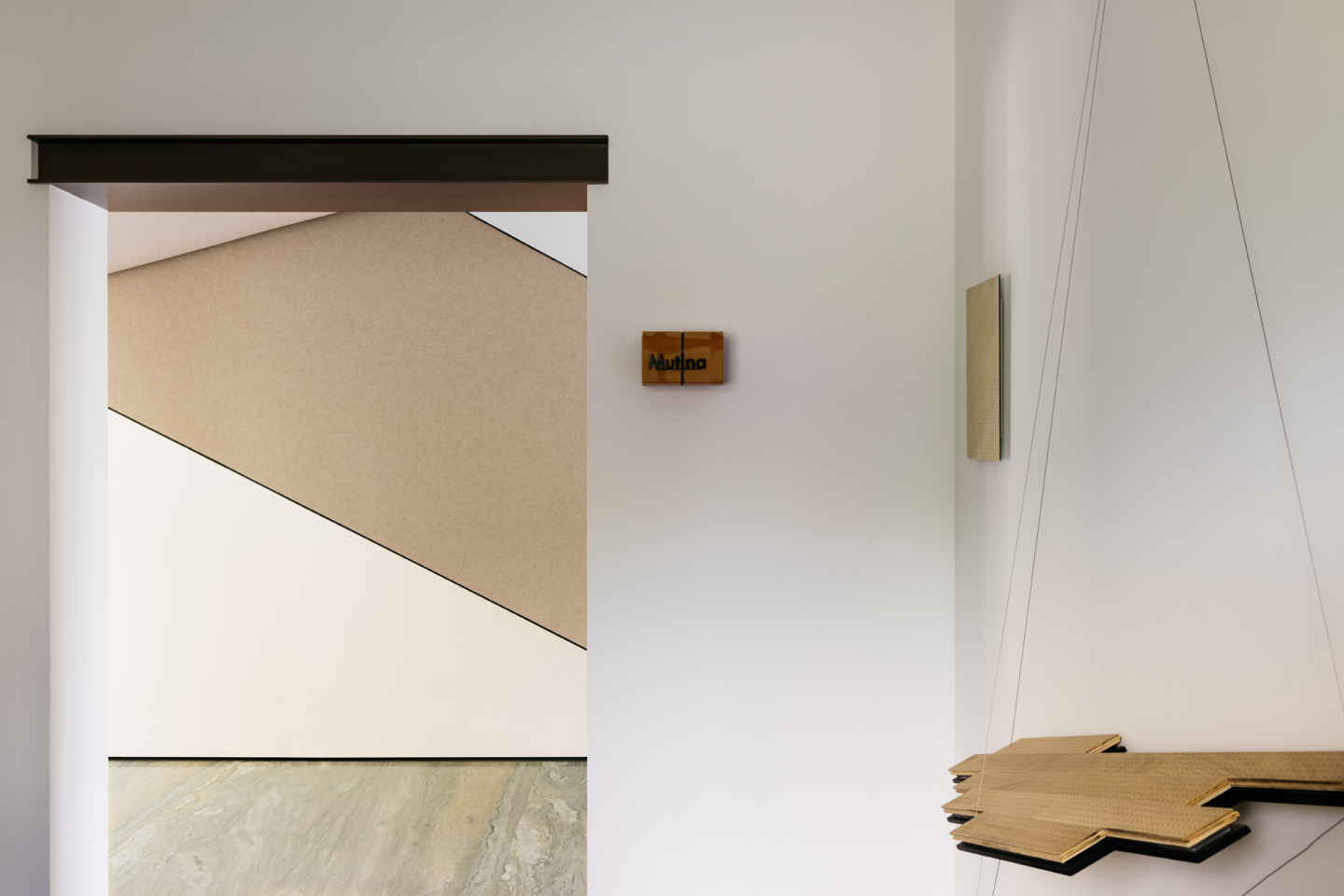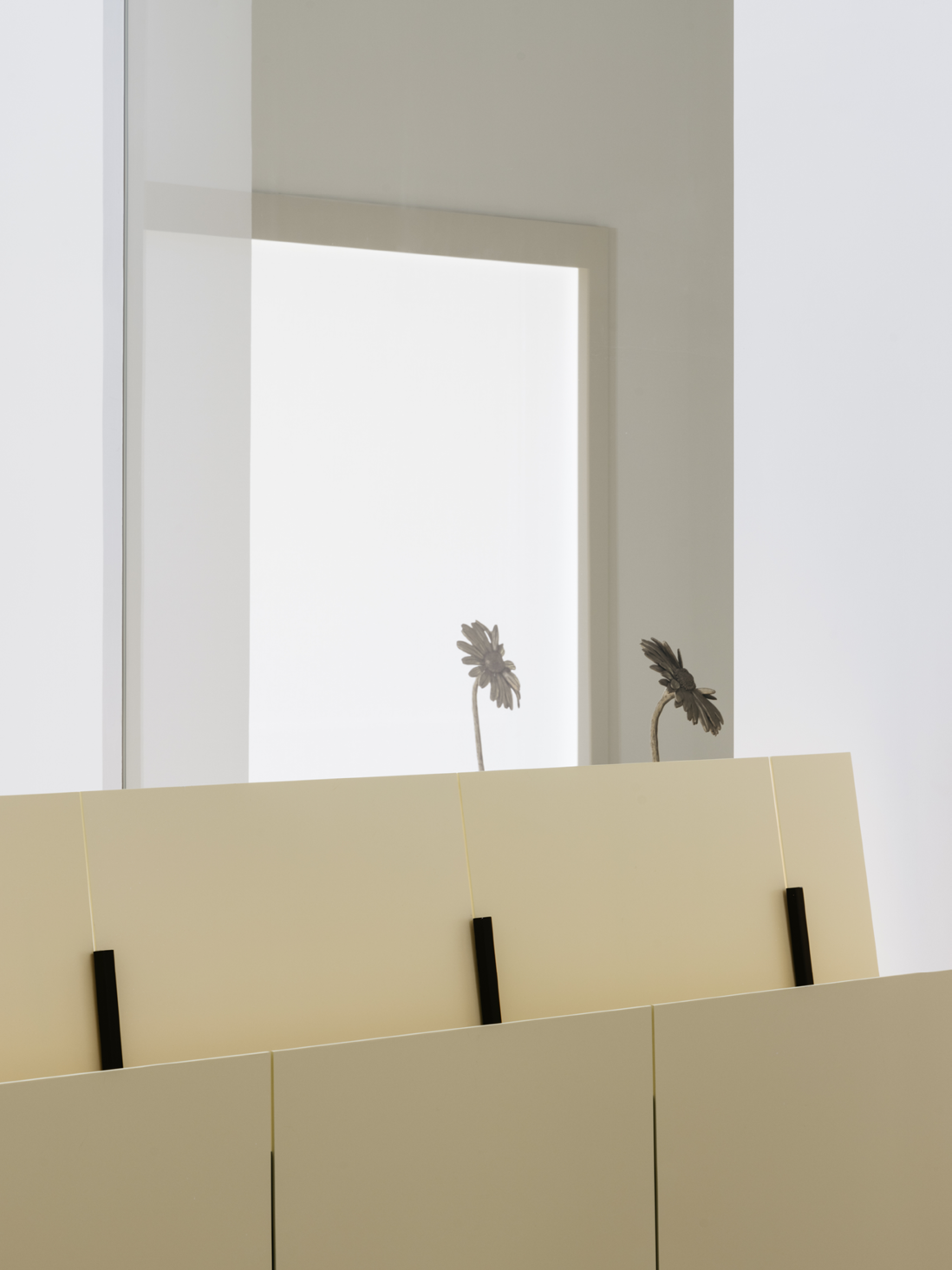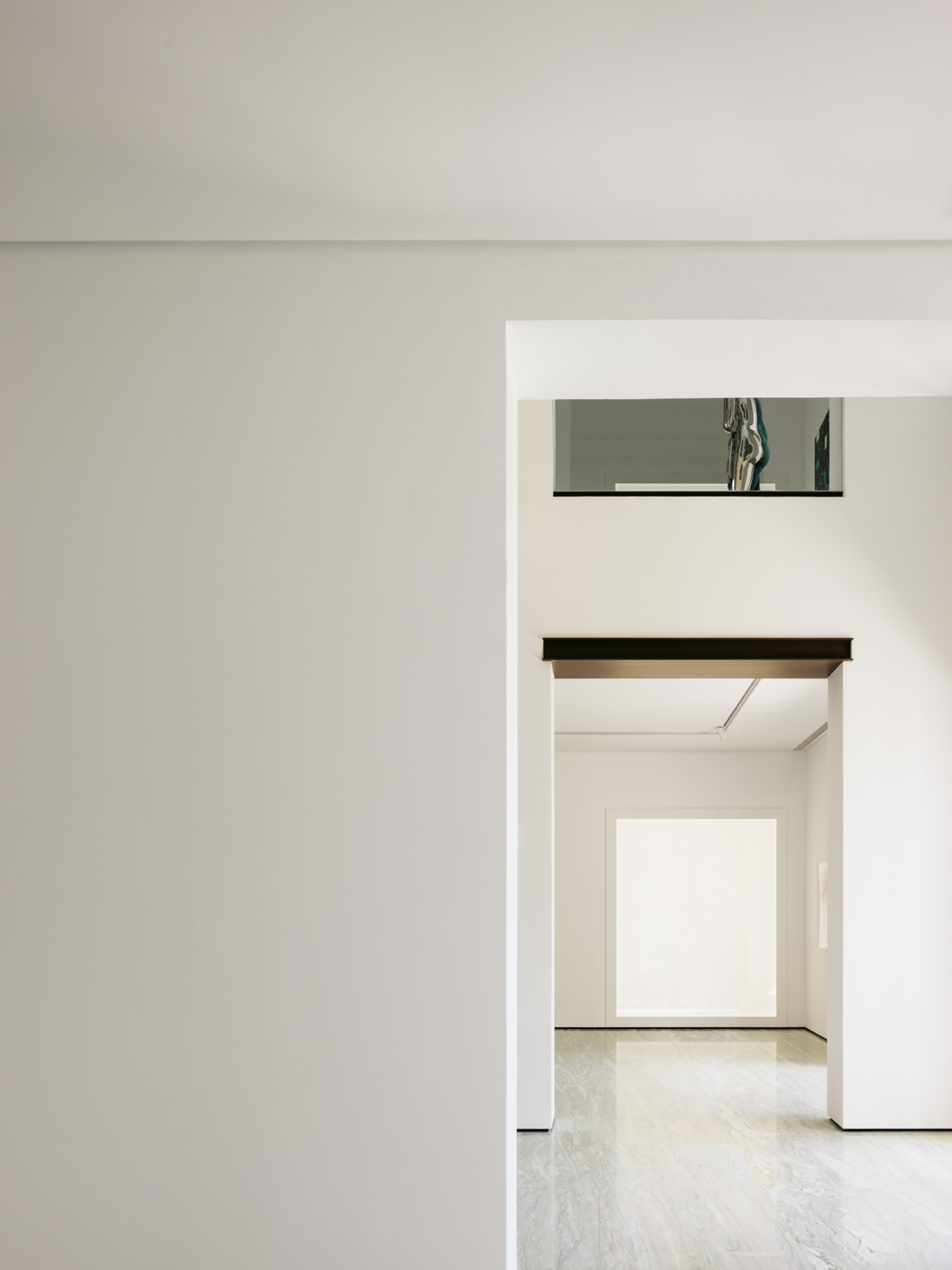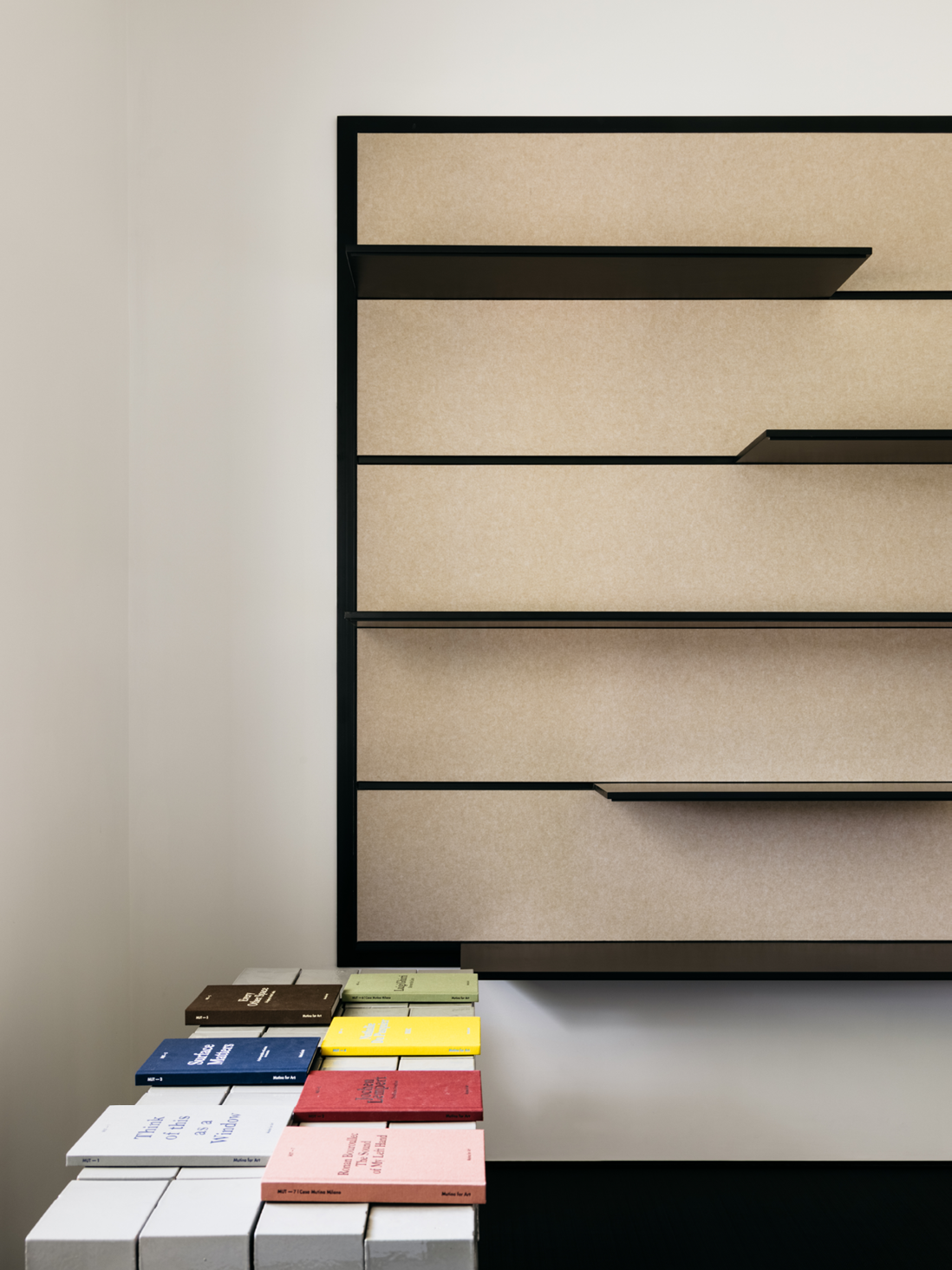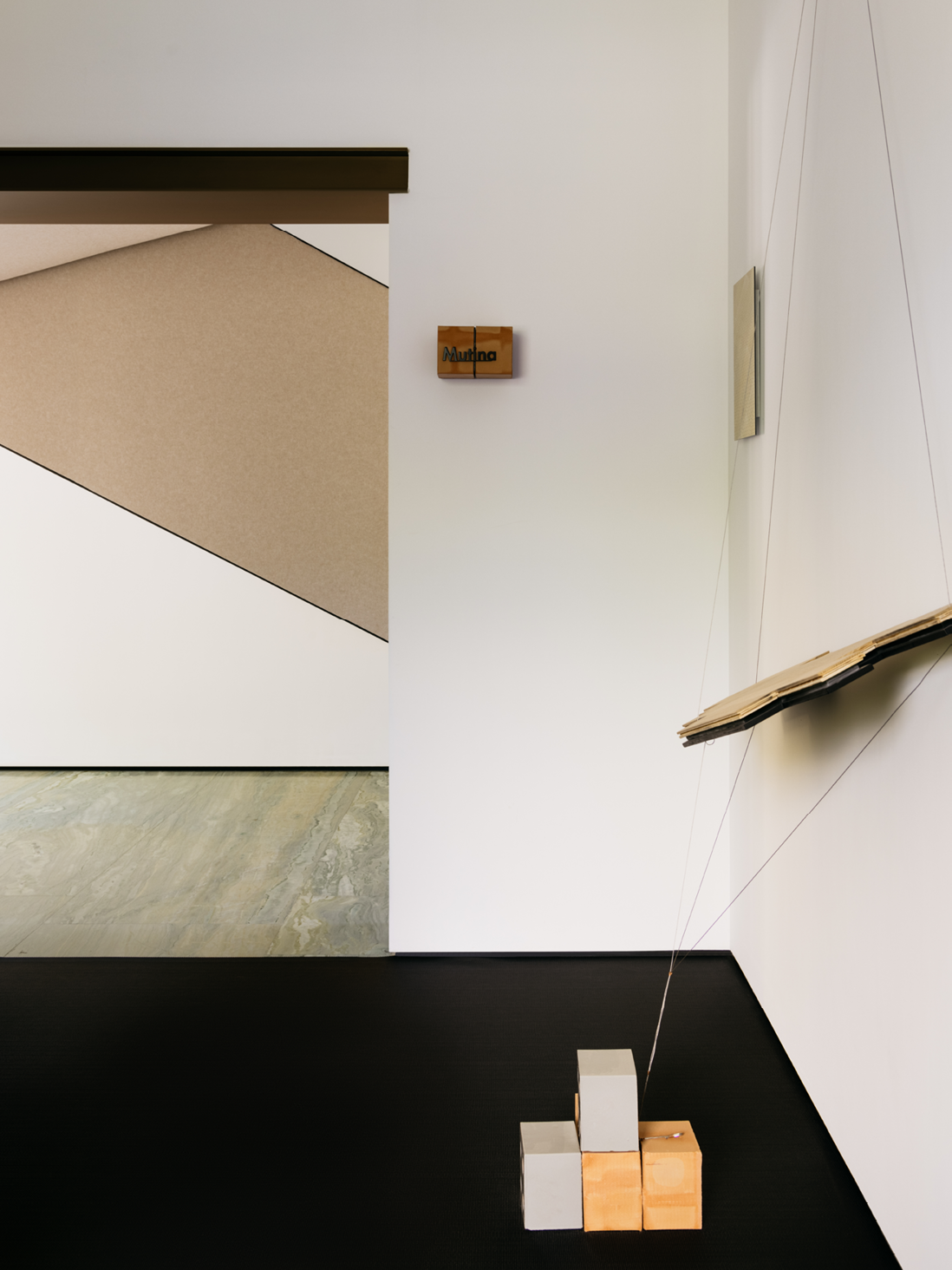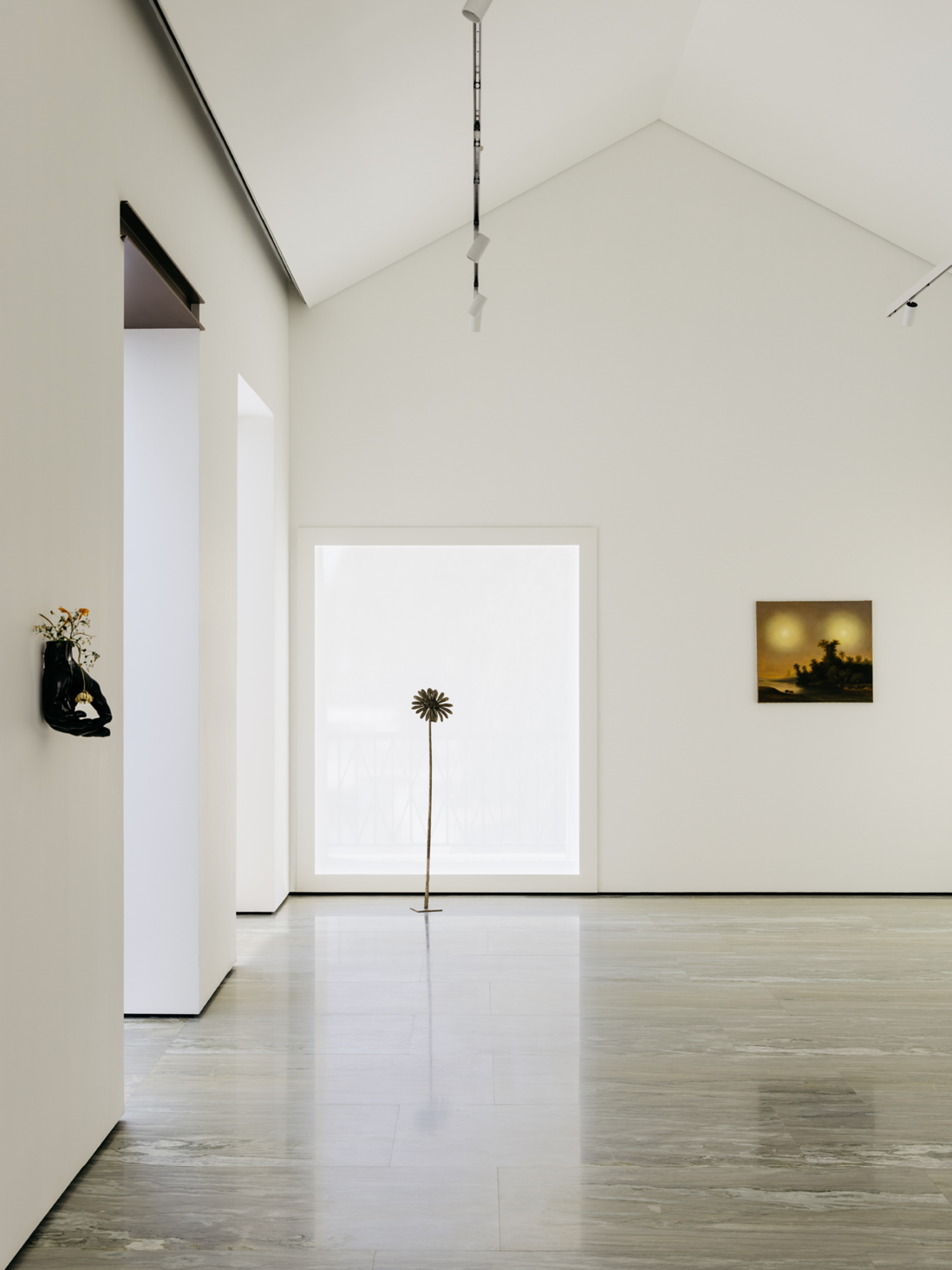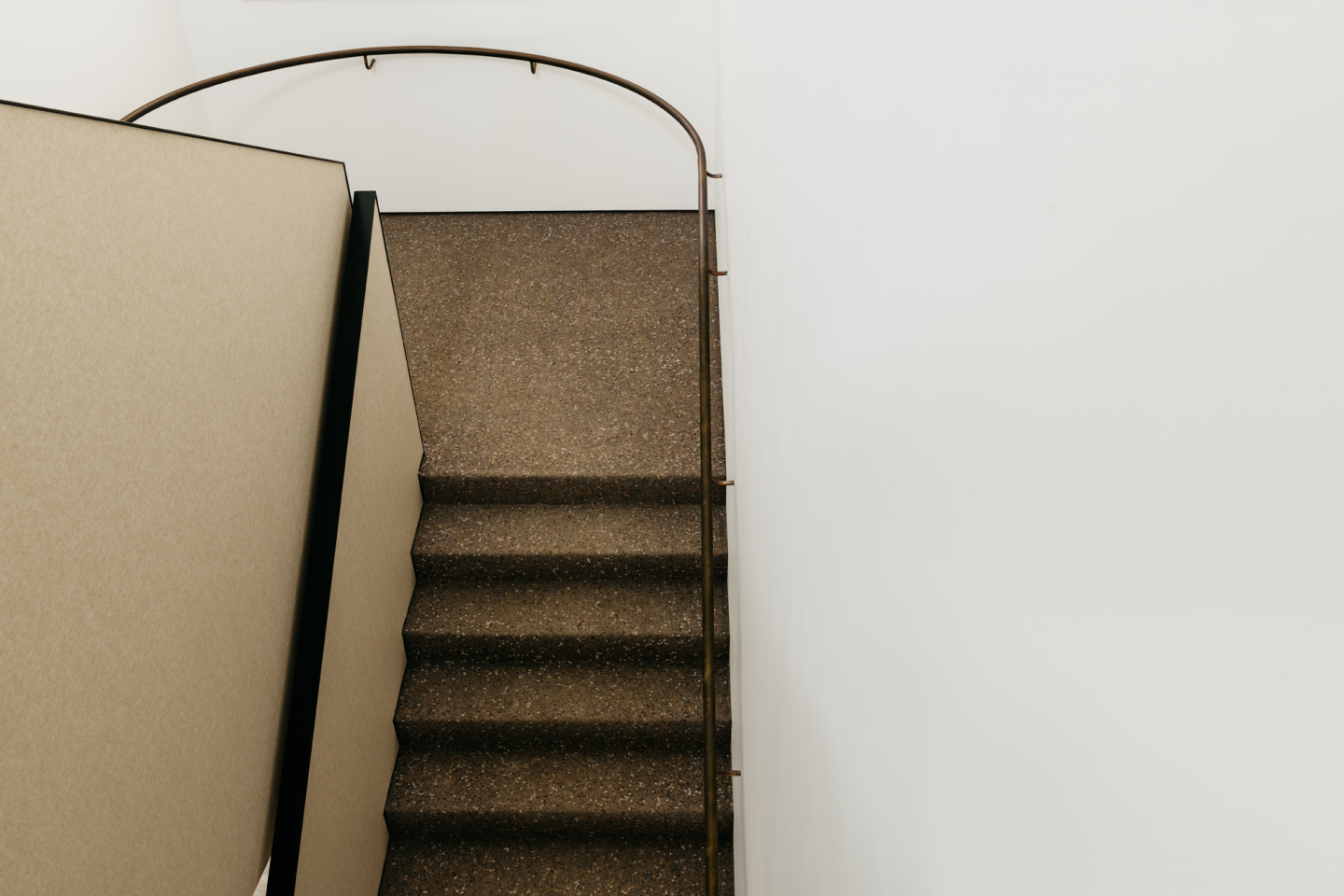Teagan Gallery
Location: Beijing, China
Area: 350 sqm
Status: Complete
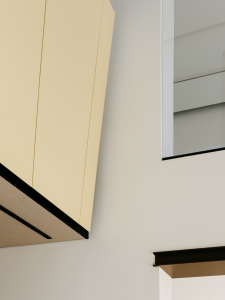
Designer Gao Ya described her first step into the eco-park on the outskirts of Beijing as “walking into a lively and beautiful painting.” The sky was clear and blue, the sun kissed the various flowers, and spring emerged slowly from the magnolia branches. A breeze stirred the willows’ reflections on the lake, and ducks played occasionally on the water. In this “paradise” hidden on the edge of the city and countryside, nature has reclaimed its place.
The gallery is nestled within this natural embrace, a two-story building divided into four exhibition halls, a derivative product store, and a reception room. Upon entering the ground floor, visitors are greeted by two small exhibition halls. Upstairs, the space is intentionally left undivided, leaving two exhibition halls to accommodate larger and more diverse exhibitions and exhibits.
Unlike the white-box public spaces in cities, this unique location and its former villa character make it a more private, egalitarian, and relaxed art venue. “It’s like a host creating a gallery with their collection to share with others,” says Gao Ya. Even the changing seasons seem like a gift prepared by the host for visitors.
As T-Gallery opens to the public, the first exhibition curated by Perrotin Gallery, “Flowing to All Lands,” also begins. Based on the spatial and ecological aspects of T-Gallery, “Flowing to All Lands” uses the concept of “umbilical cord” to present works by 12 artists from around the world. These works respond to the Chaobai River, the mother river of northeastern Beijing suburbs, connecting this autonomous native land with surrounding urban blocks while maintaining an intimate relationship of coexistence, dependency, and mutual perception with the original environment.
With admiration and reverence for nature’s “internal order,” following the clues of architecture and exhibitions, we explore the relationship between humans and the land. Perhaps we can transcend anthropocentrism, gradually find our place, and weave a more intricate and complete ecological web for the world.
1. Continuing the original intent of the building
As the mastermind behind this renovation project, the future appearance of the gallery emerged in the designer’s mind during her first visit. In our earliest concept drawing, we depicted it—the whole natural world as a painting, with a white European-style building faintly visible in the distance. Entering the painting, walking into the building, the artworks awaited exploration.
For a new brand, the life traces of a building provide essential growth nutrients. The design elements representing the original owner’s intent acquire new meanings over time, becoming the beginning of a new story told by the architect.
To understand a building, one must return to its origin. After taking over the project, we dismantled the previous owner’s layout as much as possible, revealing the building’s original structure. Surprises began to appear. The pitched roof was fully revealed for the first time, making the second floor more transparent, bright, and with a touch of retro charm.
Windows are the soul of this building. The original structure had windows on all four sides, some floor-to-ceiling, some suspended, varying in shape but symmetrically arranged, introducing natural light into the house. Window frames, like picture frames, capture the picturesque scenery outside.
This time, we chose to materialize this natural connection—the windows’ positions and significance were preserved, but the original wooden frames were replaced with double-layer structures. In addition to windproof and rainproof windows, each window had a baked-painted metal “picture frame.” An exhibition here thus broke spatial limitations, connecting with a broader context.
The colors chosen for the window frames also carry special intentions. To leave more space for artists and their works, most of the exhibition hall window frames are white, blending with the walls. When reaching the green window frames, it’s like diving into a lush forest. Sometimes, unexpected “artificial” frames catch your eye. In the reception room, ONOAA STUDIO added a small warm yellow frame. The gallery owner can hang their favorite works here, sharing them with visitors as a reflection of the gallery’s “mood.”
The connecting corridor between the indoors and outdoors was also preserved. The circular columns with a European style add elegance and cuteness, highlighting the building’s unique charm. There’s also a functional consideration—it serves as a breathing space. After viewing the exhibition, passing through the door, one can fully enjoy the rare leisure and relaxation through interaction with nature.
2. Expression of materials
From the spatial structure to the materials themselves, every part of T-Gallery has its expression. The green stone flooring seems to extract the surrounding environment’s color, creating a magical fusion and transition between nature and the building.
To add some “home warmth” to the space, the previous owner’s carpet design was retained on the stairs. The brown base material is scattered with white and orange patterns, reminiscent of the trees and flowers around the gallery. The natural texture also extends beyond sensory experience to environmental protection and durability—the nylon material has a longer lifespan, with the carpet backing made from crushed plastic bottle caps.
Breaking free from fixed usage methods and scene concepts, discovering and changing perspectives, sustainable design no longer relies on constant material and process innovation. Instead, it seeks traditional alternatives to the desire for “trends” and “new things.”
Typically used for reinforcement and hidden inside, I-beams were directly used in T-Gallery’s door frames, serving both functional and decorative roles. This also reflects our self-identity—minimizing our role in the space while leaving appropriate intervention traces.
An “unfinished” state perfectly meets this need, bringing some unexpected delight. The warm brown color of the I-beams was inspired by the previous owner’s love for wood styles. Continuation in details connects different users across time, creating a dialogue.
On the staircase, to soften the original handrail’s solemnity, the designer added an arched handrail on the other side. This gentle curve follows the stairs, like a deliberate stroke in the space, full of presence and hard to replicate.
In T-Gallery, exhibitions are not just space fillers; they complement each other, offering more possibilities. Following the exhibition route, the curatorial language seems to echo with the space. Occasionally appearing by the window, exhibits create another dialogue with the natural reality outside.
In fact, through spatial design, meeting and creating people’s needs, and digging into each experiencer’s perception, in other words, designing to connect people and space, is our consistent architectural practice philosophy.
As a new complex creative space and cultural social venue, T-Gallery will also fully launch a residency program for young artists, host themed forums, salons, collectors’ dinners, and various cross-field cultural and creative activities. In the future, more people with different backgrounds and from different fields will gather here, enriching and extending the space’s life dimension.
Handing the space over to the users, allowing it to grow into a complete state through the connection between people and place—that is the vision we embedded at the beginning of the architecture. Like cultivating a tree together, the builder’s task is to plant a small seed, then let it absorb more energy and grow freely.
